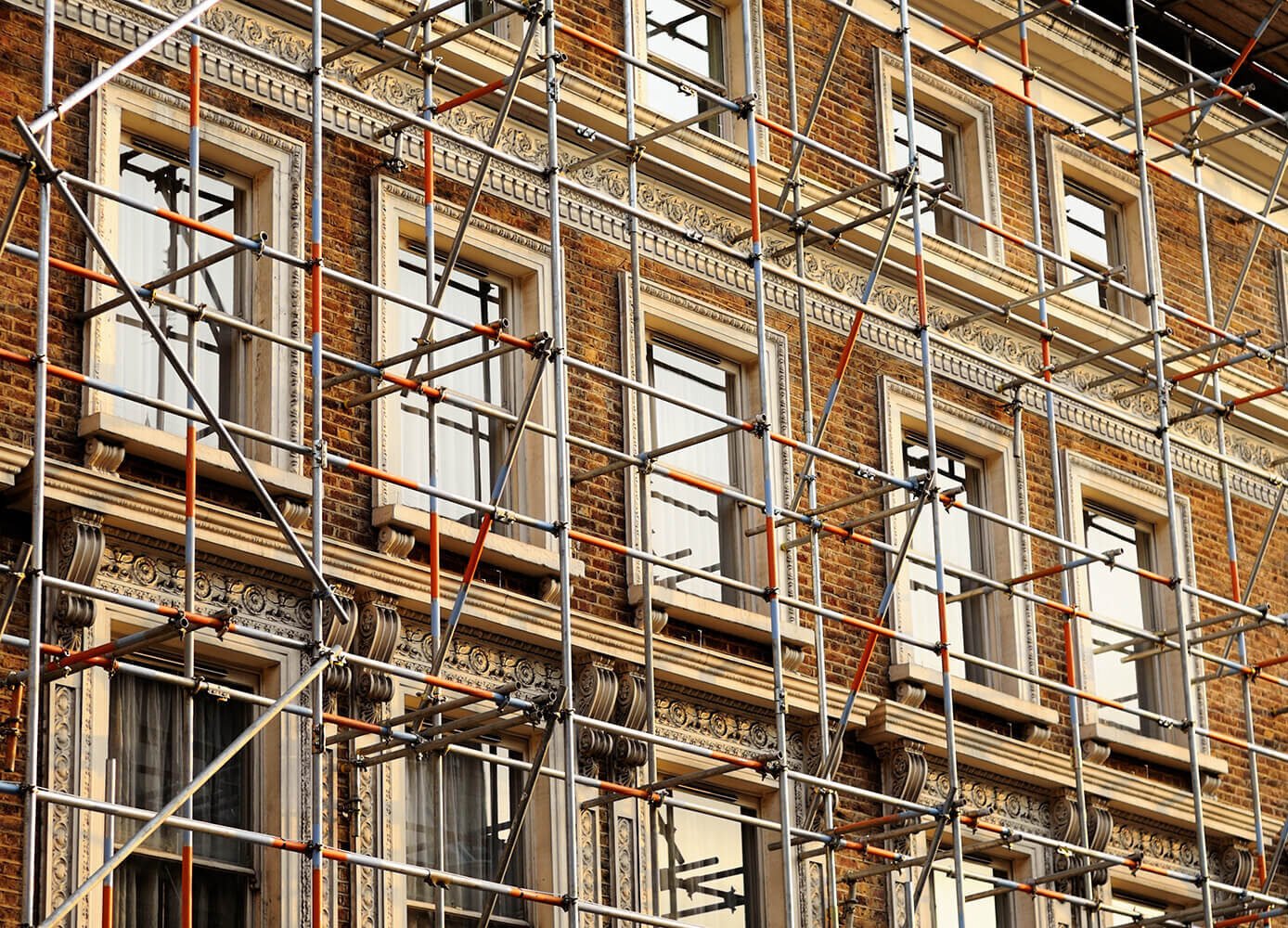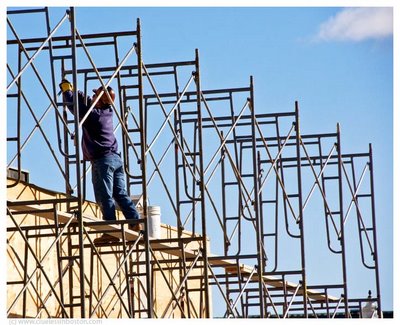Exploring the Numerous Sorts Of Scaffolding Made Use Of in Building Jobs
The building sector counts greatly on different kinds of scaffolding to satisfy details job needs, each offering distinct advantages and applications. Standard structure scaffolding gives a sturdy structure for basic jobs, while put on hold scaffolding is important for job on skyscraper frameworks.

Traditional Framework Scaffolding
Typical framework scaffolding is one of one of the most extensively used methods in the building and construction market because of its robustness and versatility. This system is composed of straight and vertical frameworks that are set up to produce a secure platform for employees and materials. The primary components consist of vertical articles, horizontal journals, and diagonal braces, which with each other give a strong structure that can sustain substantial loads.
One of the crucial advantages of typical frame scaffolding is its versatility to different building and construction projects, ranging from domestic structures to huge commercial structures. The modular design permits simple assembly and disassembly, making it effective for both long-lasting and temporary projects. In addition, the system can be personalized in height and width, fitting different structure styles and website conditions.
Safety and security is critical in scaffolding applications, and standard structure systems are furnished with guardrails and toe boards to avoid falls and make sure employee defense. Furthermore, regular inspections and adherence to security regulations are important in keeping the integrity of the scaffold. Overall, typical framework scaffolding stays a basic option in the building sector, providing a trustworthy platform for labor and enhancing total job effectiveness

Suspended Scaffolding
Suspended scaffolding supplies an one-of-a-kind option for building jobs that need accessibility to elevated surface areas, especially in scenarios where conventional framework scaffolding might be unwise. This sort of scaffolding is normally suspended from the roof covering or upper levels of a structure, utilizing a system of ropes, pulleys, and platforms to develop a working area that can be adapted to different elevations.
Among the main benefits of suspended scaffolding is its versatility. It can be conveniently repositioned or reduced to fit adjustments in construction demands, making it perfect for tasks such as home window installation, façade job, and upkeep on skyscrapers. Furthermore, the marginal impact of put on hold scaffolding permits for much better use ground area in metropolitan atmospheres, where area is frequently limited.
Security is an essential factor to consider in the usage of put on hold scaffolding. Proper rigging and securing systems should be utilized to guarantee stability and avoid accidents. Operators needs to likewise be trained in the safe use of this devices. In general, suspended scaffolding offers a efficient and reliable solution for accessing scaffolder falls hard-to-reach areas in various construction scenarios, enhancing both productivity and safety and security on website.
System Scaffolding
System scaffolding, typically related to as a contemporary service in the scaffolding sector, includes pre-engineered parts that can be rapidly assembled and adapted for different building projects. Scaffolding. This sort of scaffolding is characterized by its modular style, which permits versatility and performance on job websites, suiting different heights and structural demands
Usually made from high-strength steel or aluminum, system scaffolding uses enhanced toughness and security. The components consist of upright messages, straight ledgers, and angled braces, which adjoin securely, making certain a robust framework. The style frequently includes standardized fittings, simplifying setting up and disassembly processes, consequently reducing labor time and costs.

Rolling Scaffolding
Rolling scaffolding is a versatile choice to conventional fixed scaffolding, made for wheelchair and ease of use on construction websites. This type of scaffolding is composed of a platform supported by structures with wheels, enabling workers to conveniently move it as needed. The flexibility function significantly boosts performance, as it reduces downtime linked with setting up and disassembling dealt with scaffolding.
Commonly constructed from lightweight products such as aluminum or steel, rolling scaffolding provides a sturdy yet mobile service for projects needing constant repositioning - Scaffolding. It is particularly useful in tasks such as painting, drywall installment, and electrical job, where access to different elevations and locations is necessary
Safety is vital in rolling scaffolding layout, with functions such as locking wheels to avoid unintended motion have a peek at these guys when being used, and guardrails to protect workers from drops. In addition, many designs are flexible in height, accommodating different job needs.
Cantilever Scaffolding

The layout of cantilever scaffolding usually involves making use of arms or braces anchored to a building or framework, enabling the system to extend exterior safely. Safety is extremely important; therefore, these scaffolds must be engineered to hold up against environmental problems and various loads. Routine assessment and maintenance are vital to make certain architectural stability and employee safety and security.
Cantilever scaffolding is favored for its versatility and effective use area, making it a popular selection in urban atmospheres look at here where room constraints prevail. Additionally, it facilitates much easier accessibility to high altitudes, ultimately adding to the total efficiency of building jobs. Similar to all scaffolding types, appropriate training and adherence to safety and security criteria are crucial for employees utilizing cantilever scaffolding.
Verdict
Typical structure scaffolding provides security, while put on hold scaffolding provides flexibility for elevated jobs. System scaffolding promotes fast setting up, and rolling scaffolding enhances movement for differing job environments.
Traditional structure scaffolding supplies a durable structure for general tasks, while suspended scaffolding is vital for work on high-rise structures.Moving scaffolding is a flexible alternative to typical set scaffolding, made for wheelchair and ease of usage on construction sites. As with all scaffolding types, correct training and adherence to security criteria are vital for workers utilizing cantilever scaffolding.
Standard frame scaffolding supplies security, while suspended scaffolding supplies flexibility for raised tasks. System scaffolding helps with quick assembly, and rolling scaffolding boosts movement for differing job environments.
Comments on “Affordable Domestic Scaffolding for Every Home Renovation Project”